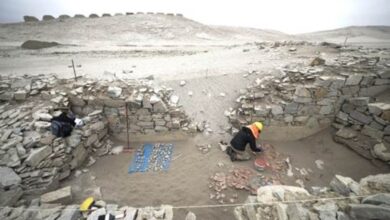First Women Team To Win the Nobel Prize in Chemistry
Dr. Charpentier and Dr. Doudna developed the CRISPR/Cas9, a new method for genome editing that has revolutionized the molecular life sciences.

The Woman Post | Nelson Andrés Tamayo Gaviria
Listen to this article
The two scientists became the first female partnership and the sixth and seventh women to win the Nobel Prize in Chemistry, they also made history by winning the award only eight years after their initial breakthrough, since it usually takes decades in this field.
This recognition contributes to breaking the still existing glass ceiling in science for women. Out of 186 people laureated with the Nobel Prize in Chemistry through history, only seven of them are women: Marie Curie, Irène Joliot-Curie, Dorothy Crowfoot Hodgkin, Ada E. Yonath, Frances H. Arnold, Emmanuelle Charpentier, and Jennifer A. Doudna. “I hope to see the day when two women winning the Prize is not a notable fact,” said Dr. Doudna after the award announcement.
Emanuelle Charpentier was born in Juvisy-sur-Orge, France, in 1968, she has a Ph.D. in Microbiology from Institut Pasteur, she is currently the director of the Max Planck Unit for the Science of Pathogens in Berlin, Germany. Jennifer A. Doudna was born in Washington D.C, United States, in 1964, she has a Ph.D. in Biochemistry from Harvard Medical School, she is currently a professor and researcher at the University of California, Berkeley, in the US.
The discovery
Since 2005, Spanish professor Francisco Mojica described how the bacteria and archaea’s immune system worked, his studies showed that bacteria protected themselves from viruses by copying the virus RNA (Ribonucleic acid) and then using it to destroy it, he called that system CRISPR (Clustered Regularly Interspaced Short Palindromic Repeats).
Also read: 5 WOMEN SCIENTISTS WHO LEFT THEIR LEGACY FOR TODAY
In 2011, Dr. Charpentier published her studies on the Streptococcus pyogenes bacteria, one of the most harmful for humans, she discovered that a relatively new known molecule called tracrRNA was present in that bacteria and was part of the bacteria’s immune system (the CRISPR). Later, in 2012, she met Dr. Jennifer A. Doudna during a conference and invited her to collaborate in the search for new applications of the mentioned molecule.
The idea of “cutting” DNA has been exciting for the scientific community and several researchers are using Charpentier and Doudna’s insights in the last years
Genetic scissors
There were several scientists involved in the CRISPR research, professors Mojica and Feng Zhang are some of the most relevant, but in 2012 Dr. Charpentier and Dr. Doudna created and patented the CRISPR/Cas9 technology, which use a similar system to the bacteria’s one to cut the DNA, this technology has been used in several fields to edit the genome of any animal, including humans.
“This is such sophisticated technology and yet very simple and versatile, the protein Cas9 has the ability to recognize a certain sequence of the DNA (…) and the protein also has the ability to cleave to DNA. Now we can study cells and organisms that were difficult to study,” said Dr. Charpentier in her Nobel Lecture.
By “cutting” DNA, the Cas9 technology is really useful to edit it, since it allows scientists to eliminate and add new genes into the DNA, so they can even eliminate genes that cause specific diseases, that is precisely the reason why they are called “genetic scissors.” Since it was discovered hundreds of scientists around the world are using this technology, it is also known for being affordable and easy to use even without advanced equipment.
According to the Nobel Committee for Chemistry: “Using these (scissors), researchers can change the DNA of animals, plants, and microorganisms with extremely high precision. This technology has had a revolutionary impact on the life sciences, is contributing to new cancer therapies, and may make the dream of curing inherited diseases come true.”




